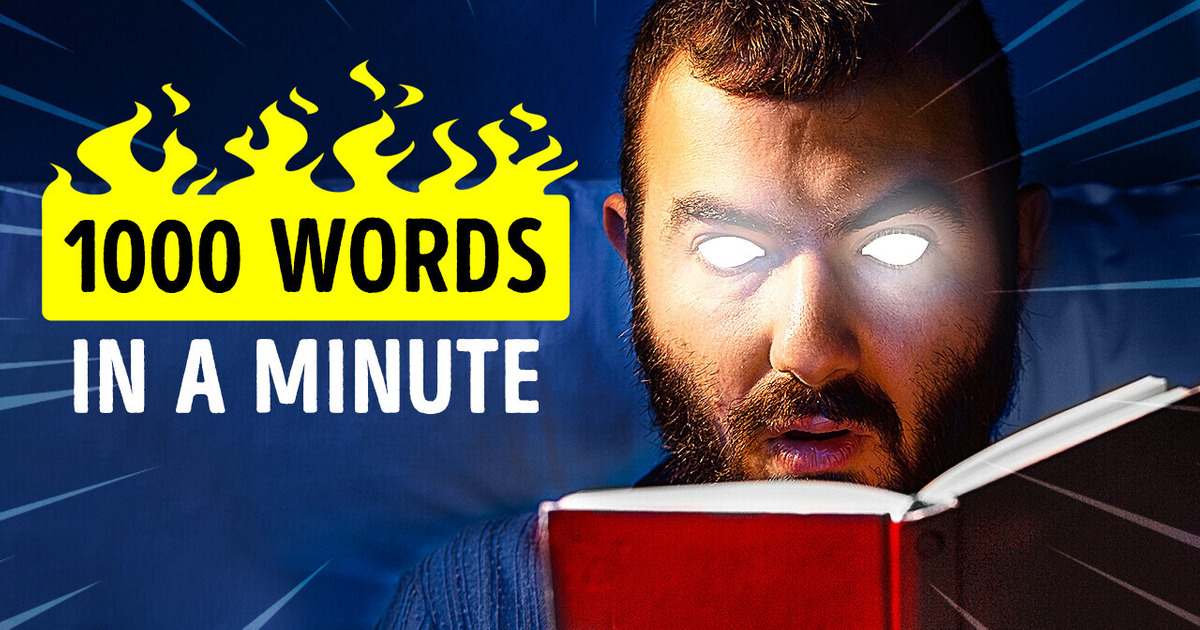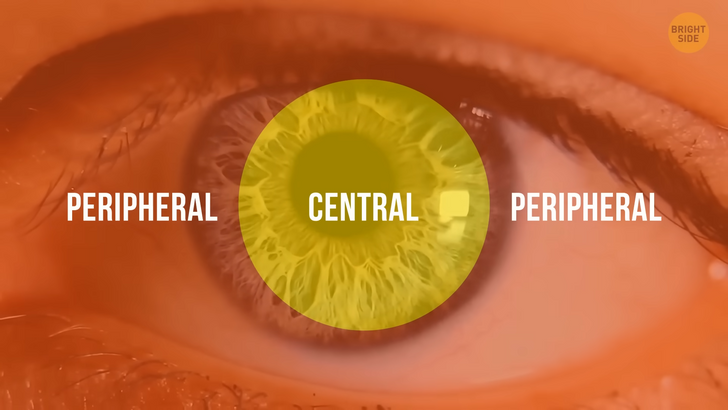15+ Raw Stories About Jealousy That Can Leave You Speechless


Hey! See that pile of books standing on your nightstand waiting to be read. I have great news for you! In this article, I gathered the internet’s most valuable tips on how to enhance your reading speed.
If you follow these simple techniques, you’ll be able to double, triple or even quadruple your reading speed! Let’s get to it.

First, let’s establish your WPM — words per minute — rate! If you’re a Level 1, that means you can read up to 150 words per minute. See if you can easily read this: 150 WPM equals one word every 0.7 seconds, which should be really slow. That was easy enough, wasn’t it? Now, if you’re a Level 2, you should be able to read up to 250 words per minute.
Let’s check how comfortable this speed is to you: Believe it or not, most casual conversations are spoken at around this speed. Reading in this video is much, much easier than reading at the same speed on paper. Ok, this is about to get more challenging, so buckle up.
If you’re a level 3, that means you’re able to read 350 words per minute. Let’s check it out: This should be harder to follow, yet, if you keep your focus solely on the words appearing in sequence here, you’ll be able to read every word without compromising your comprehension. Phew, ok.

Let’s move on to Level 4. At this level, you should be able to read 450 words per minute. Can you read this? Reading at high speeds is a very important and useful tool for those who read large amounts of text every day. If you’re a student, a teacher, or an author, speed reading can be a great addition to your busy routine.
So, we’ve probably lost some people here. This speed is already way above the average reading speed, but if you tried to keep your focus on the blinking words, you probably got an idea of what we meant to say. Now, this is the last test before we delve deeper into some iconic speed reading tips that will have you doubling your WPM rate.
In level 5, a person is expected to read 600 words per minute. Are you a fast-reading ninja? Let’s check: When reading at high speeds you need to infer most of the words. Even the world’s fastest readers won’t be able to achieve 100% comprehension every time. If you can scan through the words in a sentence your brain should be able to comprehend the sentence, allowing you to understand the general message of what was written.
Most of you probably used inference to pass this level. Ok, you have all my respect if you were able to understand that last level. Well, in case you’re thinking that reading at such a high speed is something unachievable, think again! You’ll be glad to know that there is a science behind speed reading and that with a little bit of training and focus, you’ll be able to do so yourself. The first thing you need to change in your reading style to read faster is to stop subvocalizing.

Subvocalization is a natural mechanism of our brain. When we are reading a book, a sign on the road, or even a shampoo label, we will subvocalize. In case you’re not familiar with the term, subvocalization is basically that voice you hear in your head while you’re reading. Remember when you were first learning how to read, and you probably had to read out loud? Until a certain point when teachers began telling us to read silently to ourselves in our heads. And guess what?
We continue doing so until today! But the problem with subvocalization is that if you’re saying every single word in your head, then you’ll basically read as fast as you talk. This is also why the average reading speed is about the same as the average talking speed, and that range is 150 — 250 WPM. There is no evidence that suggests we can get rid of subvocalization completely, but you sure can reduce it. Let’s take this sentence as an example:
Emily watches videos on Bright Side every day. Instead of subvocalizing every single word, try: Emily Bright Side every day. The idea is not necessarily to skip words. Your eyes will still be able to capture all the words but practice subvocalizing fewer of them per sentence. Now that we’ve gone through this first tip, let’s try to put it into practice by reading this sentence at a speed of 500 WPM: If you are reading this at a 500 wpm speed, then you are probably not subvocalizing all of the words in your head, right. Good job!

Keep up the good work, and you will be reading faster and faster by the second, literally. Don’t sweat it if you couldn’t read every single one of the words in the last test. Remember: it’s not about the words, it’s about the ideas. Now, the second thing you need to try is to discipline your eyes. The human eye is naturally attracted to motion, so if you use a pen, a marker, or even your finger while reading, this will help you to read faster.
Oftentimes when reading a sentence, our eyes will go back and forth, reading the sentence multiple times, instead of respecting a regular movement forward towards the end of the page. Normally, our eyes do it so fast that we don’t even notice that we’re doing it.
This phenomenon is called visual regression and the best way to avoid it is to use something to lead your eye’s movements. You can try this right now if you’d like. Grab a book, and a pencil and run that pencil all the way across the page. Tip: don’t draw on the book, use the eraser end of the pencil.
Hey, don’t forget to tell us if it worked out for you! Moving on to the third tip: you need to learn how to use your peripheral vision. For instance: focus on this object at the center of the screen. While still looking at it, can you also see these other objects appearing to the left and right of where you are currently directing your focus? Well, you can probably see these objects due to your peripheral vision.

Normally, when we read, we focus solely on one word at a time. We seem to forget to take advantage of the fact that our eyes can easily perceive their surroundings. A simple exercise that can help you to use your peripheral vision is to start reading the sentences of your book from the middle, instead of beginning from the far left corner. So focus on reading an entire page by starting from its middle.
This way you will stimulate your eyes to absorb the words located at the right and the left of the middle section. Let’s try this one out at a regular to fast speed. Keep your focus on the middle of the screen and let your peripheral vision grasp the words on the side: You are doing a great job.
Maybe this way you will be able to read a little bit faster. Although it’s something new, peripheral vision is something we have stimulated all our lives. You just need to learn to stimulate it for reading purposes. Hey, good job! Maybe you got better at speed reading by now.

Here are a few last tips for you before we wrap up: whenever you can, try forcing yourself to read faster, even if the information comes out scrambled in the beginning. This will accustom your brain to read at faster speeds. This way, you’ll be stretching your reading speed comfort zone!
For instance, if you are used to reading 300 words per minute, try reading at 600 words per minute. This will bug your brain a little bit, but by the time you go back to reading at 300 WPM, it will seem very slow. This will most likely create an effortless incentive to increase your reading speed. As the grand finale, I’ll hide the last tip inside one more test. This time, the speed is 1000 WPM. Good luck!

Scientists say that listening to instrumental or classical music while you’re reading helps you to read faster. Music of this genre will help you to focus on the activity at hand. So, in the process of increasing your WPM rate, be sure to try this simple yet effective tip. Did you get that?
In case you didn’t, slow the video down and watch it again. And now, for some SPEED TALKING: Hope this gave you some insight on how to speed up your reading. See you next time!











